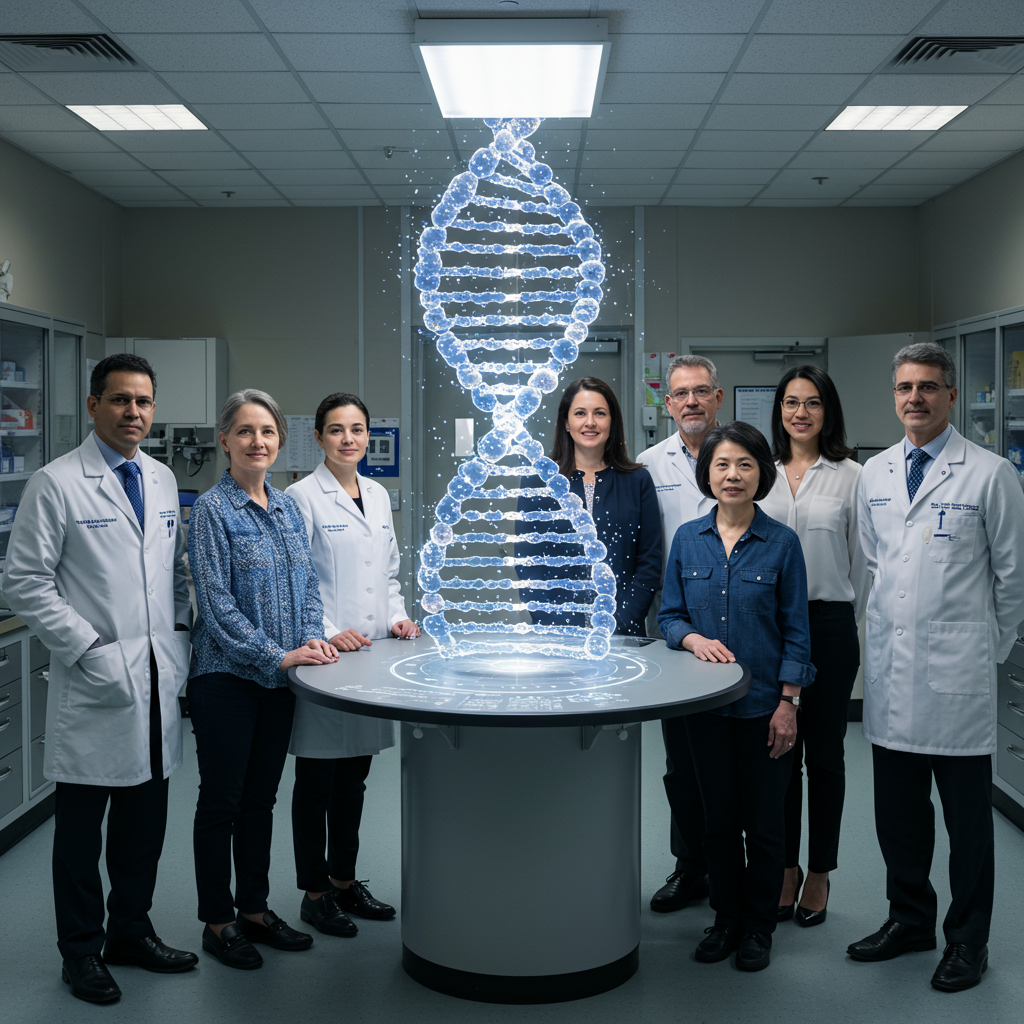The landscape of Huntington’s disease treatment may be on the cusp of a significant shift, as a groundbreaking gene therapy shows early promise in slowing the progression of this devastating neurological condition. While not a cure, these preliminary findings from a European biotech company are generating “unbridled optimism” within the patient community and among researchers worldwide. This experimental treatment offers a beacon of hope for improving patients’ quality of life, allowing them to maintain independence and function for extended periods. However, amidst the excitement, experts also raise crucial questions regarding the therapy’s long-term efficacy, accessibility, and the need for rigorous peer review.
A Glimmer of Hope for Huntington’s Disease Patients
Huntington’s disease (HD) is a cruel, inherited disorder that progressively deteriorates nerve cells in the brain. It typically manifests in the prime of life, leading to severe and irreversible damage to movement, memory, and personality. Neurologists confirm it is almost always lethal within 10 to 20 years of diagnosis, leaving families with few options and little solace. For decades, the HD community has yearned for a breakthrough, and now, that breakthrough might be within reach.
uniQure, a Netherlands-based biotech firm, recently announced promising preliminary results from a small clinical study for its experimental gene therapy, AMT-130. This innovative treatment aims to target the fundamental genetic error responsible for the disease. Dr. Ed Wild, a principal investigator at University College London’s Huntington’s disease centre involved in the trial, expressed profound enthusiasm, stating, “This is the best news we have ever had in the Huntington’s community.” Such sentiments underscore the immense hope this development brings to those affected by HD.
The Science Behind the Breakthrough
The experimental Huntington’s disease gene therapy, AMT-130, works by lowering levels of the mutant huntingtin protein. This abnormal protein disrupts the normal function of neurons in the brain, leading to the debilitating symptoms of HD. Surgeons deliver the potential gene therapy using a modified virus, which acts as a vector to introduce the therapeutic genetic material. This intricate procedure requires at least 12 hours of brain surgery, with the therapy precisely administered to two specific regions of the brain under real-time MRI guidance.
According to uniQure’s initial findings, patients who received the highest dose of AMT-130 experienced a statistically significant slowing of disease progression by an impressive 75 percent over three years. Dr. Sarah Tabrizi, who directs the University College London Huntington’s Disease Centre and led part of the trial, emphasized the profound impact this could have. “People will be able to stay in work longer, they will be able to function longer, they will be able to maintain their independence,” she noted during a conference call. This focus on improving daily life, even without a full cure, highlights the genuine value this therapy could offer.
Cautious Optimism: Unanswered Questions and Challenges
Despite the excitement, the scientific community is approaching these preliminary results with a necessary degree of caution. Experts highlight several critical areas that require further investigation and transparency. Dr. Jonathan Kimmelman, a professor of bioethics at McGill University in Montreal, points out that the full data has not yet been made public or subjected to independent peer review. This crucial step helps identify potential flaws in experimental design and provides vital insights into factors like optimal dosing and timing. Kimmelman cautioned that while “it could be very exciting,” company press releases can sometimes be “a very exuberant and selective representation” of findings.
Rachel Harding, an assistant professor at the University of Toronto and editor-in-chief at HDbuzz, a dedicated website for Huntington’s disease information, echoes this blend of hope and practicality. While acknowledging the positive feeling of seeing “something that looks hopeful in clinical trials,” she also recognizes significant limitations. The trial was small, enrolling around 30 patients, with only 12 followed for 36 months at the highest dose. This limited sample size and the absence of long-term data raise questions about the durability of the drug’s effects. “Will the effects of the drug wane or drop off or, you know, will it not work as well as people’s disease progresses?” Harding queried. “We don’t know.”
Practical Considerations and Future Outlook
Beyond the efficacy and data transparency, practical considerations for this neurodegenerative disorder treatment are substantial. The invasive nature of the brain surgery, requiring real-time MRI guidance, makes it a complex procedure. Questions remain about who would qualify for such an intensive treatment, particularly individuals in earlier or later stages of Huntington’s, or those who might not be ideal candidates for major brain surgery.
The cost of such advanced gene therapies is another significant concern. Previous single-dose gene therapies have been estimated to cost around $2 million, raising questions about affordability and equitable access should AMT-130 gain approval. This financial aspect could pose a substantial barrier for many patients, emphasizing the need for robust discussions on healthcare funding and accessibility.
uniQure is scheduled to meet with the U.S. Food and Drug Administration (FDA) later this year to share its data. The company aims to submit for marketing approval in 2026. This timeline indicates that while the preliminary results are promising, there is still a considerable journey ahead before this genetic breakthrough could become widely available to patients. The path from clinical trials to widespread medical use is often long and arduous, requiring extensive validation and regulatory hurdles.
Frequently Asked Questions
What is Huntington’s disease and how does this new gene therapy work?
Huntington’s disease (HD) is a devastating, inherited neurodegenerative disorder that causes the progressive breakdown of nerve cells in the brain, leading to uncontrolled movements, cognitive decline, and psychiatric problems. The new experimental gene therapy, AMT-130, aims to address the root cause by lowering levels of the mutant huntingtin protein. This protein is responsible for disrupting normal neuronal function. The therapy uses a modified virus to deliver therapeutic genetic material directly into specific brain regions, effectively “silencing” the production of the harmful protein and potentially slowing disease progression.
What are the next steps for uniQure’s AMT-130 and when might it be available?
uniQure, the developer of AMT-130, plans to meet with the U.S. Food and Drug Administration (FDA) later this year to present its preliminary data. Following these discussions, the company intends to submit its application for marketing approval in 2026. If successful, this timeline suggests that the Huntington’s disease gene therapy could potentially become available in the years following 2026, assuming further positive trial results, successful peer review, and regulatory clearance. The process requires extensive validation to ensure both efficacy and safety.
What are the main challenges or unanswered questions surrounding this potential Huntington’s disease gene therapy?
Several key challenges and questions remain. Firstly, the trial’s small sample size (around 30 patients, with only 12 at the highest dose for 36 months) and lack of long-term data mean the durability of the therapy’s effects is still unknown. Experts also emphasize the critical need for full data transparency and independent peer review, as preliminary announcements can sometimes be overly optimistic. Furthermore, the treatment involves at least 12 hours of complex brain surgery under real-time MRI guidance, raising concerns about its invasiveness and applicability for all patients. Finally, the estimated $2 million cost for similar single-dose gene therapies poses significant questions about accessibility and affordability.
Conclusion: A Blend of Hope and Scientific Vigilance
The preliminary success of uniQure’s AMT-130 represents a monumental step forward in the fight against Huntington’s disease. For a condition that has offered so little hope for so long, the prospect of slowing its relentless progression is truly transformative, promising enhanced patient quality of life and extended independence.
However, the scientific community, including leading neurologists and bioethicists, rightfully advocates for continued vigilance. The journey from initial findings to a widely accessible and approved treatment is complex, demanding rigorous data scrutiny, transparent peer review, and extensive long-term studies. As the HD community holds its breath, the focus remains on balancing this powerful new hope with unwavering scientific rigor to ensure the best possible outcomes for all affected by this challenging disease.
Word Count Check: 1080




